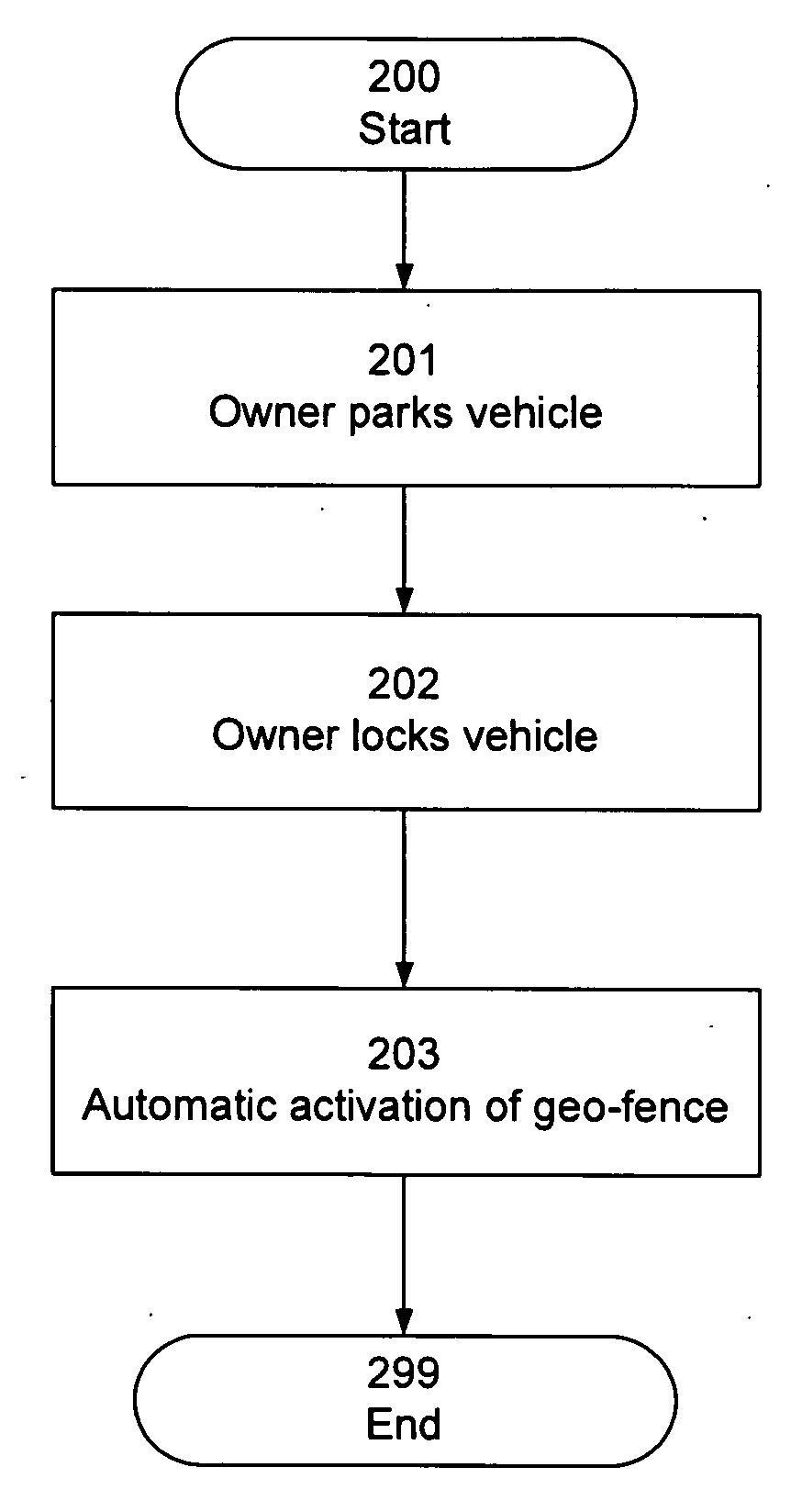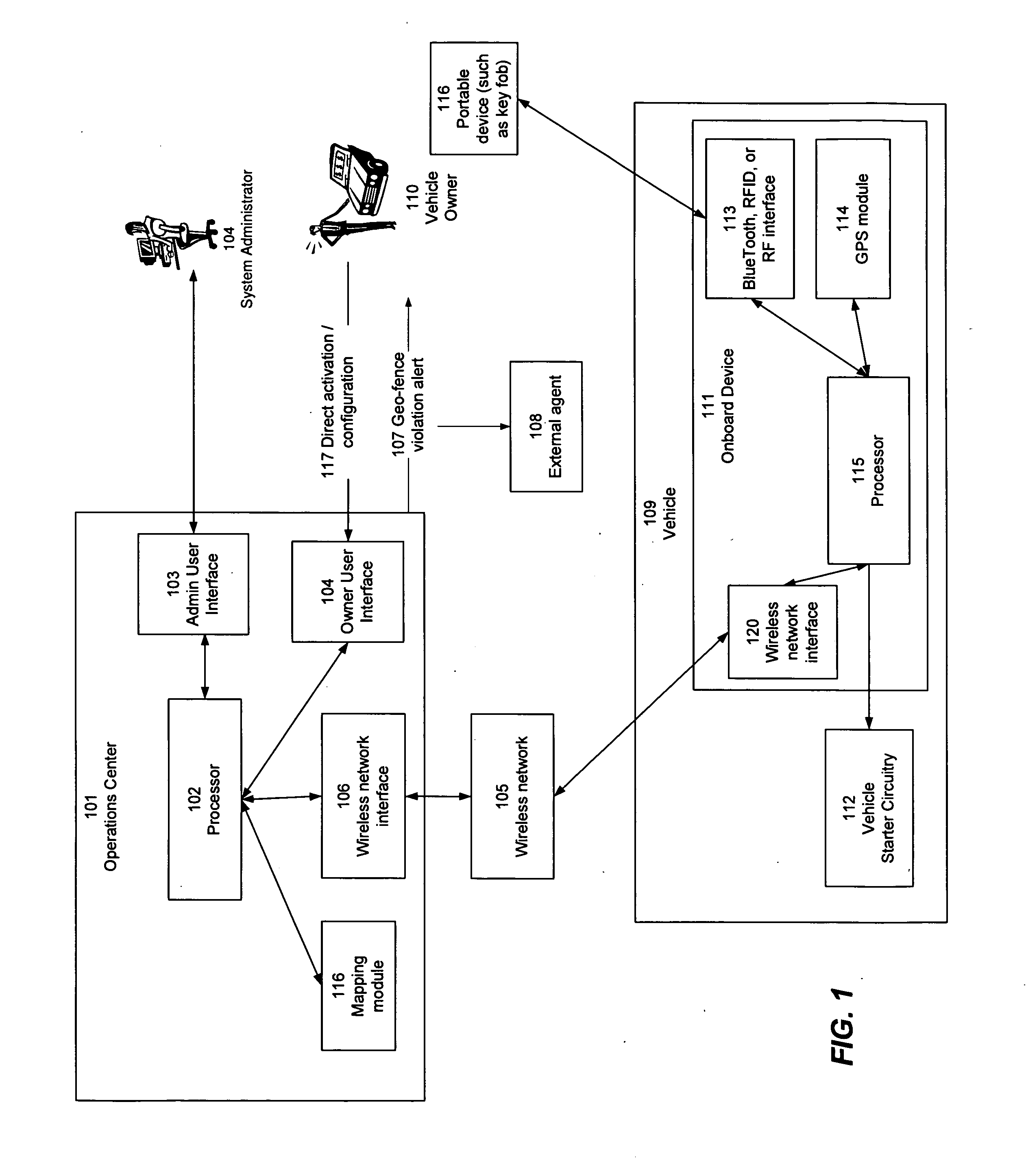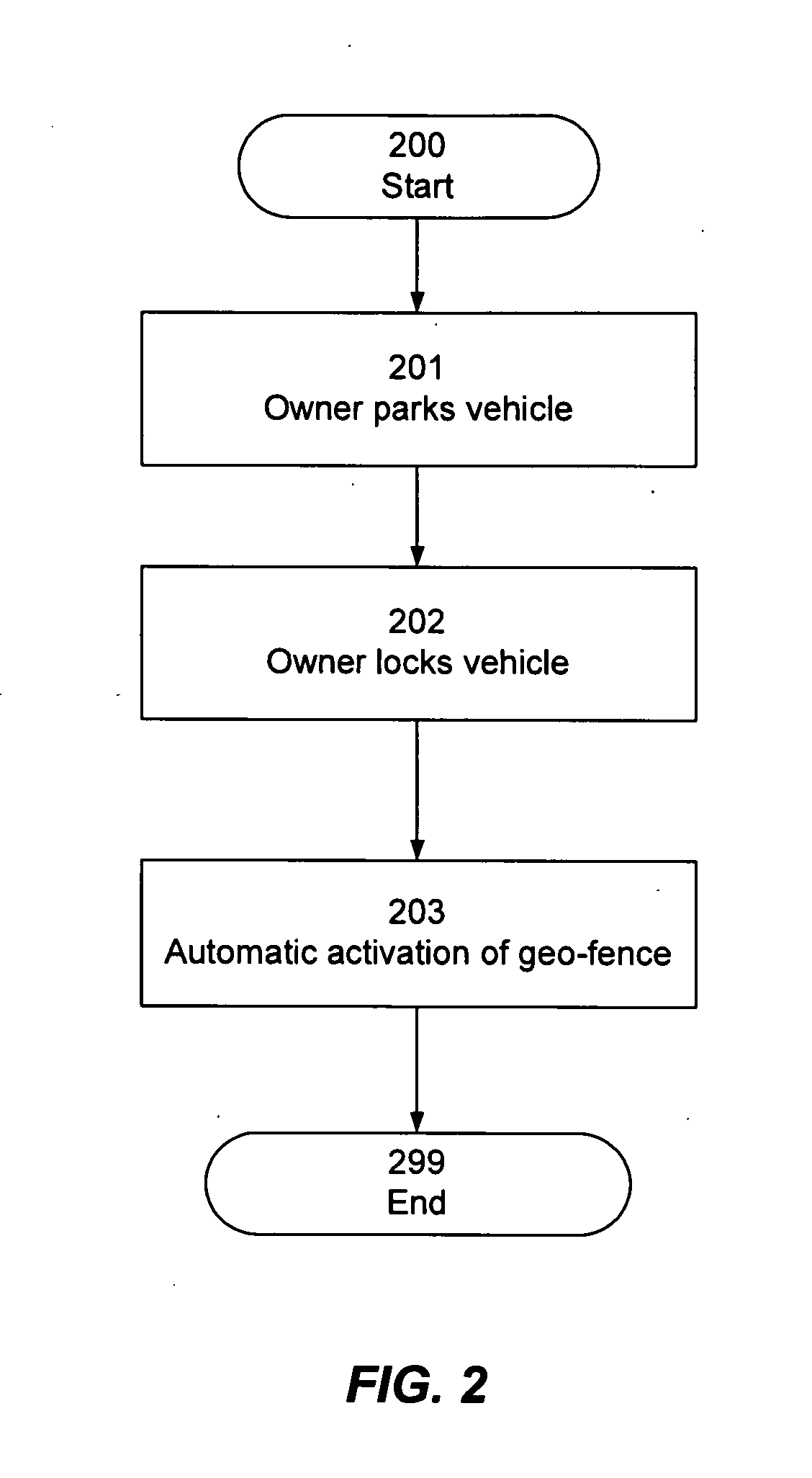Automated Geo-Fence Boundary Configuration And Activation
a geo-fence and automatic technology, applied in the field of location tracking, can solve the problems of requiring a user, failing to provide any mechanism for detecting the movement of the asset from an arbitrary current location, and existing techniques often fail to provide sufficient precision to detect small movements of the asset, so as to improve the response time, reduce the possibility of user error in specifying the geo-fence, and improve the reliability
- Summary
- Abstract
- Description
- Claims
- Application Information
AI Technical Summary
Benefits of technology
Problems solved by technology
Method used
Image
Examples
Embodiment Construction
[0026]In one embodiment, the present invention includes or interfaces with location tracking functionality as described in related to U.S. patent application Ser. No. 11 / 539,292 for “STARTER-INTERRUPT DEVICE INCORPORATING GLOBAL POSITIONING SYSTEM FUNCTIONALITY”, attorney docket number GH004, filed Oct. 6, 2006, the disclosure of which is incorporated herein by reference. One skilled in the art will recognize that the present invention can be implemented with or without such location tracking functionality.
[0027]For illustrative purposes, the description provided herein sets forth the invention in the context of vehicles. However, one skilled in the art will recognize that the invention can be used in connection with any product.
[0028]For purposes of the following description, “vehicle owner”, “owner”, and “user” are synonymous and can refer to any individual who is interacting with the components of the present invention.
[0029]Referring now to FIG. 1, there is shown a block diagram...
PUM
 Login to View More
Login to View More Abstract
Description
Claims
Application Information
 Login to View More
Login to View More - R&D
- Intellectual Property
- Life Sciences
- Materials
- Tech Scout
- Unparalleled Data Quality
- Higher Quality Content
- 60% Fewer Hallucinations
Browse by: Latest US Patents, China's latest patents, Technical Efficacy Thesaurus, Application Domain, Technology Topic, Popular Technical Reports.
© 2025 PatSnap. All rights reserved.Legal|Privacy policy|Modern Slavery Act Transparency Statement|Sitemap|About US| Contact US: help@patsnap.com



